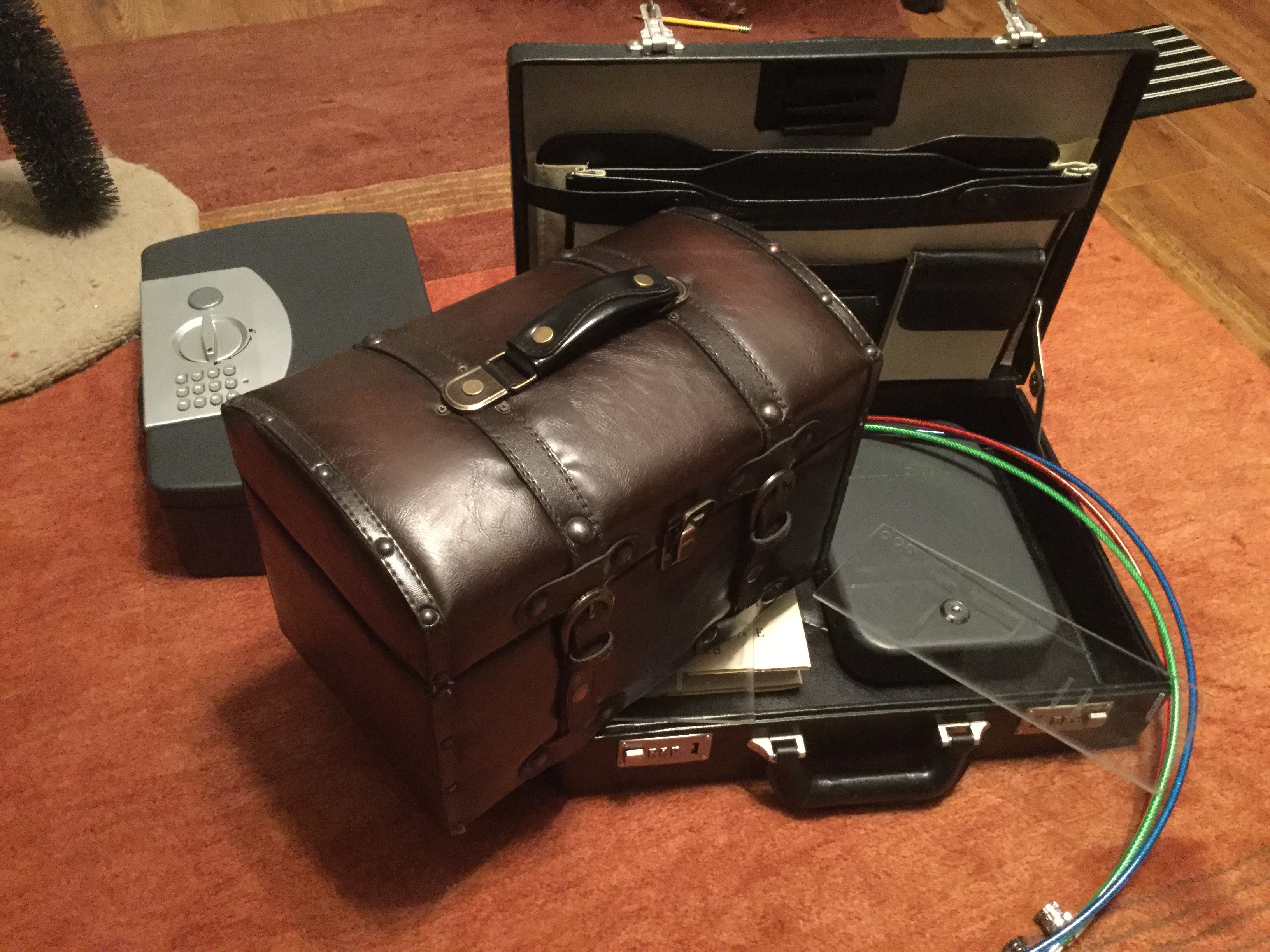

Blog 4: As of this moment everything has been built! I have been using the maker hub at Elon to print a really smooth cryptex, a case for the deck of cards, three keys that will serve as clues for one of the bike lock puzzles, and a small file that the final “secret code“ will be kept in. I’ve also used the laser engraver to carve a clue into the top of the wooden box that I’ve made specifically for this escape room, as well as several clear pieces of acrylic that will be used in someway to solve two different puzzles.
I was able to order all of the materials I needed very easily, and all of the different puzzles, didn’t have a lot of moving pieces and their interaction was simply intellectual, I did have a lot of trouble with my final puzzle. The one involving the magnets. SPOILERS: essentially I have created a false bottom in the box that I was building. The clue engraved on the top of the box directly ties into how you use the directional lock to open the case. Inside the case our clues to another puzzle. However, embedded inside of the bottom of the case are a series of ceramic magnets arranged to form a three digit code that unlocks one of the bicycle locks around the final case. This puzzle has been extremely challenging for me to find a reasonable way to solve. Using magnets to find the magnets underneath the bottom proved to be impossible, as the magnets outside of the box attracted more to the other magnets rather than the ones inside the box. Simply using pieces of metal prevented the magnet to magnet issues, but it completely lacked any precision needed for identifying numbers hidden out of sight. I started using iron powder as a way of identifying the numbers, but there was no way I could make that unstick from a magnet under the box without specific instructions to the puzzle solver. Once again, my wonderful wife, suggested using an EM field detection sheet, to identify the magnets. It is fantastic. There is no hint that the magnets are there except for the color of the sheet and the color of the wood. The EM detection sheet works perfectly every time!
Connected with this blog post will be a number of images of the elements of my escape room. For obvious reasons I will not be showing how they connect together, but, if you were interested in attempting this, come to the Burlington maker fair April 28, 2018.
 Chuck Buckley
Chuck Buckley
Discussions
Become a Hackaday.io Member
Create an account to leave a comment. Already have an account? Log In.